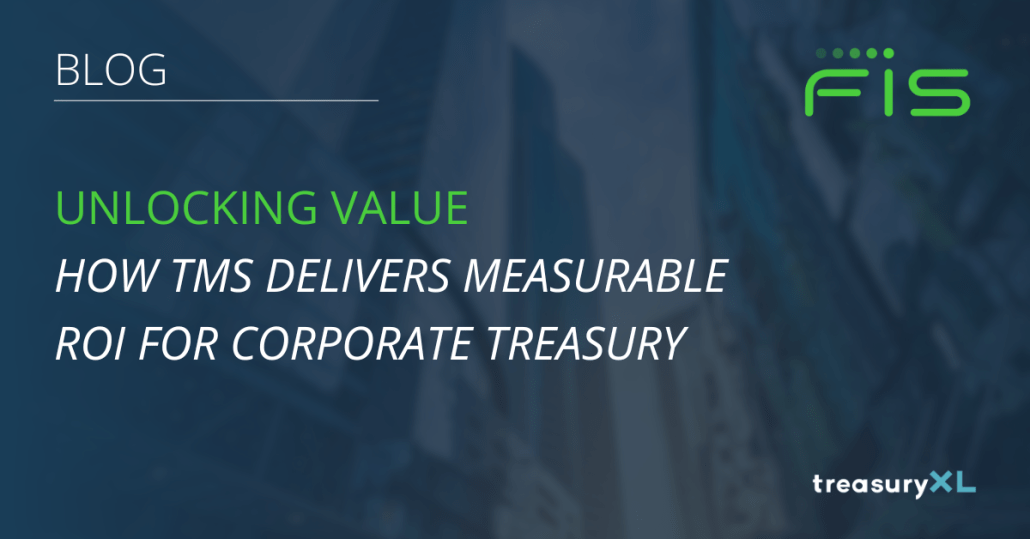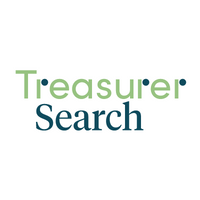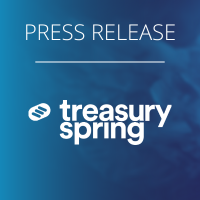Monitoring over time, across countries and industries, corporate treasurer’s answers can often be encapsulated in one of the below:
“ What you showed us was definitely of interest but we currently have other priorities. Please contact me again at the end of summer next year”
“We have no budget for this year”
“It has been a difficult year, I can’t ask for more budget from our CFO”
“I don’t have the time or resources to allocate to a similar project at this stage” “All my resources are currently busy with the ERP upgrade. Reach out to me again in one year”
“We already have everything we need (usually Excel) and we can’t justify the cost of your implementation right now to replace a process that is working”
Despite the fact all of these are valid reasons, asking for additional budget from your management is never an easy task, especially coming from a department that historically has never been considered as “profitable”; in many cases, it’s difficult for treasury departments and CFOs to really understand the Return on Investment (ROI) that can be generated from implementing a new TMS.
The goal of this short article is to identify some areas where with the support of automation, process standardization and AI, treasury departments can experience substantial financial savings while adding a layer of protection to their financial flows. Of course, subject to everyone’s core business activities the scenarios described below can vary or not apply at all. In addition, there is no silver bullet; What is summarized below is a list of examples we came across as a result of the hundreds of successful projects delivered to date.
Cash Management
- Cash Visibility – Let’s start with the number one topic: cash management and visibility. The TMS will provide real-time visibility into the cash position across the banking landscape, currencies and subsidiaries. Centralizing this function is key to making well-informed and timely decisions. How can anyone evaluate what’s best for a company’s financials when they don’t know how much money is available at the bank, or what is the size of existing investments?
- ROI Example: let’s assume a company with EUR 500 mln in cash across accounts globally, implements a TMS and improves cash visibility. By centralizing balances, idle accounts can be reduced by 2% (e.g. EUR 10 mln). Reinvesting this at a 2% return yields 200’000 EUR annually. And in most cases, this is sufficient to reimburse the annual recurring cost of the TMS.
Cash Forecasting
- Nowadays, most companies with global presence operate with multiple bank accounts, currencies, and fluctuating cash flows. Treasury teams without financial systems are forced to rely on manual processes and Excel for cash forecasting, leading to inaccuracies in predicting short-term liquidity needs. This results in excess idle cash or frequent short-term borrowing, both of which are costly.
- Furthermore, a robust TMS has the capability of easily and efficiently integrating with multiple sources to centralize information and improve forecasting, thereby ensuring better alignment with liquidity needs.
- ROI Example: Let’s consider that company Alpha keeps a buffer of EUR 20 million in idle cash across accounts to cover potential errors in forecasting and unforeseen outflows. This cash earns only 1% in a low-yield deposit. The improved accuracy of the forecasting that a TMS offers can reduce the buffer by 50% (to EUR 10 million), allowing the company to invest the other EUR 10 million in higher-yield assets at 4%, generating 300’000 EUR additional revenue.
In other words, improved forecasting measures can prevent treasurers from over-borrowing cash. For example, if improved accuracy prevents over-borrowing by EUR 5 million at a borrowing cost of 5%, the company saves EUR 250,000 annually in interest costs.
Reporting
- Savings are worth more than just their currency value. Automated calculations will mitigate the risk of human error while expediting the process. Once a report or dashboard is built within the TMS it can be saved and reused. Any given report can also be automated either refreshed continuously for users in the TMS or emailed to individuals and distribution lists at the desired frequency. Company resources do not have to be set up as users to receive emails.
- ROI – treasurers spend on average 3 hours/week gathering and consolidating data and building monthly reports for various departments (CFO, Accounting, Treasury, Tax..). With automated and intelligent reporting and dashboarding functionality, 2.5 hours/week can be saved on average. Time previously dedicated to ad-hoc reporting or managing and consolidating data in Excel, can now be allocated to more added-value activities. In this specific example, 26 days a year can be saved from automating reporting.
Market Data
- How many times have I heard our customers asking us to interface with Bloomberg or other data providers? Have you ever tried asking your TMS provider if they can also provide market data? FIS provides its own feed of market data, and we are using the same sources as Bloomberg or Reuters.
- ROI – It’s difficult to be precise on this topic, but some customers using FIS Market Data told us that FIS can be significantly more cost-effective than Bloomberg, and they were able to generate savings of close to EUR 20 000 per year
Bank Connectivity
- If you need to connect to one bank, it’s a no-brainer: to approve your payments you can connect to the e-banking portal of the bank. But what happens when your operations expand internationally and your banks grow exponentially? Either you standardize and automate this process through the TMS and through a secured SWIFT Service Bureau, or you need to hire an army of people who will spend the entire day connecting to hundreds of e-banking portals. If you want to understand more about the right setup for your company in terms of bank connectivity I invite you to review the article written by my friend Luca Crivellari Bank connectivity – why it is not a one-size-fits-all issue.
- ROI – Let’s consider the scenario when you have 6 banks. On average 1 hour a day is spent logging into individual bank portals, and associated work to transfer data to relevant Excel reports. Automating this process, and receiving end-day or intra-day reports directly in your TMS, allows you to save on average 240 hours from automating process.
Payments & Fraud
There is a common misconception on the market, as people believe a TMS can’t process high volumes of payments, as it is primarily perceived as a cash management tool. This is incorrect, as TMSs like Integrity SaaS can streamline processes by consolidating workflows, and offer you visibility in the lifecycle of all your EFT and payments, with real-time visibility on the payment status (approved, rejected, pending). Furthermore, a TMS can also incorporate sanctions screening and fraud prevention checks before a payment is processed and sent to the bank. Over the last few years, we developed a partnership with a fraud prevention market leader, establishing an API connection with our treasury technologies. Payments are screened against multiple datasets and statuses are returned in real time into the TMS and fed into the approval process. Before a payment batch is sent to the bank, there is visibility of payments that have been marked with checklist hits including the reason for such a hit, as well as payments that have passed validation and are ready to be processed.
- ROI – Let’s consider a company that processes 10’000 payments monthly. On average, by automating the manual tasks around payments, minimizing inefficiencies and leveraging bulk payment capabilities, our customers realized they could save between 10-15% on processing costs, equating to a total saving of 50’000 EUR per year. When it comes to fraud on the other hand, I learned about a customer that at the time considered the Total Cost of Ownership (TCO) of 1mln EUR calculated over 5 years for implementing a payment hub to be too expensive. Please consider this customer is a >10bln EUR revenue company, processing millions of payments around the globe. For months, a group of employees has been routing a large volume of payments to a fake subsidiary. The customer ended up losing > 20mln EUR.
Foreign Exchange (FX) Management
- Once this subject is correctly automated and monitored, through the help of a TMS, corporates can save millions. The goal of a strong FX management tool consists in reducing currency exposure, optimizing hedging strategies, and minimizing transaction costs. Additionally, the TMS can monitor FX rates in real-time, ensuring transactions are executed at favorable rates
- ROI – For instance, a multinational company managing EUR 40 million in annual foreign exchange transactions could use the FX management functionalities of a TMS to identify inefficiencies, such as over-hedging or missed opportunities for netting transactions. By implementing automated FX exposure tracking and centralized trading, our customers noticed that on average their treasury department could reduce hedging costs by 5%, saving EUR 2 million annually. Moreover, coming back to the topic of monitoring FX rates in real-time, substantial savings can be generated by ensuring transactions are executed at favorable rates. Avoiding just 0.1% in unfavorable rate variances on EUR 40 million could save EUR 40’000 annually.
Credit Collection and DSO Reduction
- This subject is not directly tied to the standard functionalities of a TMS, but since this article is also about evaluating the ROI of activities that directly impact your treasury department I thought about including it. A company like FIS, which also counts among its large suite of solutions accounts receivable software as Getpaid, can generate significant value and quick ROI for treasury and credit collection departments. Cherry on the cake, Getpaid uses AI to streamline the order-to-cash process by automating invoice management, improving payment predictions, and enhancing user interactions through intelligent process recommendations. By analyzing historical payment data and customer behavior, AI can identify trends and suggest tailored strategies for improving collections and reducing Days of Sales Outstanding (DSO). This solution not only enhances cash flow but also provides treasurers with valuable insights into customer payment behaviors and potential risks. In a nutshell, here is a direct effect it has on treasury departments:
- Reduce your DSO and anticipate cash inflows → improve your Forecasting Measures → improve your working capital → increase your liquidity
- ROI – In this case ROI varies a lot depending on your business, but I can provide you with a few clear examples, as reported in the table below, that are issued from current customer use cases:
| Industrial manufacturing company | Marine solutions and
Logistics |
Retail corporation |
| – 23.5% reduction of
Accounts Receivables – EUR 32 million increase in total AR balance – 15% headcount reduction |
– DSO reduced to 15 days – 25% overall past due – Customers over credit limit went from 47% to
5% |
– 65% decrease in
litigations – 21% improvement in DSO – 100% of portfolio coverage |
Not necessarily corporates will have the same Key Performance Indicators (KPI), as some will evaluate the direct impact the system has on their AR balances, while others will generate some substantial savings in terms of headcounts.
There are many other areas I didn’t touch on today, such as Bank Fee Analysis (BFA), Hedge Accounting, or Debt Management benefits. What matters to me is to highlight how important is it to have your operations under control, while having all your teams working efficiently on the same tool rather than a dispersive ecosystem of Excel spreadsheets. Not just because it reduces significantly human error, but especially, as proven above, despite the initial scary cost of implementation, you can land on your feet quickly and generate important savings in the short term.
Summary
If you skipped all this article to read the conclusions, major gains from implementing a TMS can be summarized as follows:
1) Financial gains – optimization of liquidity management, fx management, and cash forecasting
2) Gain in productivity – reduction in manual tasks and extensive use of spreadsheets 3) Control gains – audit simplicity and security
4) Security gains – protection against fraud and decreased percentage of human errors 5) Visibility gains – decision process facilitated as you now have full visibility on your cash
This article aimed to encourage treasurers and finance departments not to stop in front of a first offer but to dig deeper when it comes to the benefits of adopting new technologies that can ultimately help you in your daily life and support the enterprise’s growth. There is no golden rule, and some of the examples listed above might not apply to your treasury department. It is however proven that automation and control can enhance your treasury and finance department and can substantially contribute to the economic success of your company.












